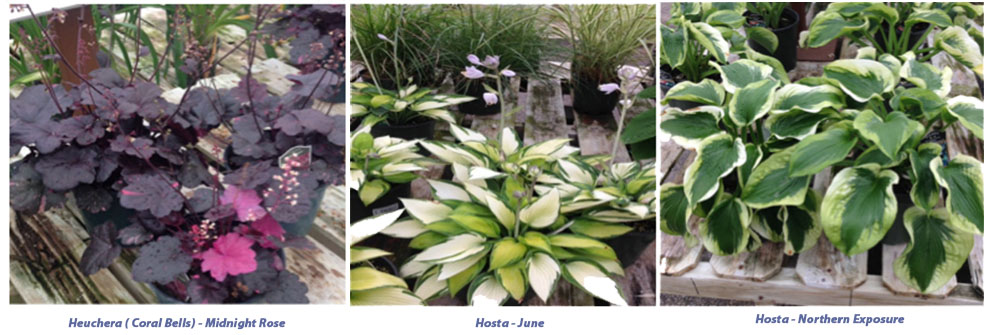Follow Us x
Perennial plants are the backbone of nearly every flower garden. Unlike annual plants, which must be replanted each spring, herbaceous perennials die to the ground at the end of the season, and then regrow from the same roots the following year.
Before you plant, there are steps that will ensure perennial success:
- Know your soil. If it is too heavy, too sandy, or prone to hold water, you will need to amend the soil prior to planting. A good organic compost or other properly aged organic matter will improve these conditions. Building up your soil with compost encourages a healthy root system and healthy plants. If you are not sure how to amend, ask a professional.
- Take time to research which perennials will do best in your chosen spot. Most perennials, such as those shown above require a good amount of sunlight. Knowing where to place each plant will enrich your perennial experience.
- All plants require proper watering and feeding. Perennial gardening is an investment, so be sure to give your plants the water they need and the fertilizer that best suits the individual plant needs.
- A densely planted perennial garden will shade out most weeds. A new garden, a spring garden or a garden that is more sparsely planted, will benefit from some form of mulch. The mulch will keep weeds to a minimum, help keep the soil cool and retain moisture.
- Some plants drop their spent flowers and seed heads. Others hold onto them for months, or even right through the winter. Removing spent flowers will keep your plants looking their best, and it often stimulates reblooming. It also prevents plants from expending their energy on seed production. After blooming, some plants should be cut back rather than deadheaded.
Shade-Loving Perennials
The perennials shown below enjoy and thrive in shade, as do Bleeding Heart and Astilbe.
Perennials:
Allium, Baby's Breath, Baptisia (False Indigo), Bee Balm, Blanket Flower, Bleeding Heart, Bugleweed, Catmint, Chelone, Chrysanthemum, Coreopsis, Daylily, Delphinium, Echinacea, Forget Me Not, Geranium (Cranesbill), Goldenrod, Heliopsis (False Sunflower), Hibiscus, Hollyhock, Jacob's Ladder, Joe-Pye Weed, Lavender, Liatris, Lobelia (Cardinal Flower), Lupine, Mint, Penstemon, Phlox, Bergenia, Rudbeckia or Black Eyed Susan, Russian Sage, Salvia, Sedum (Stonecrop), Sisyrinchium (Blue-eyed Grass), Snakeroot, Sneezeweed, Viola and Yarrow.

